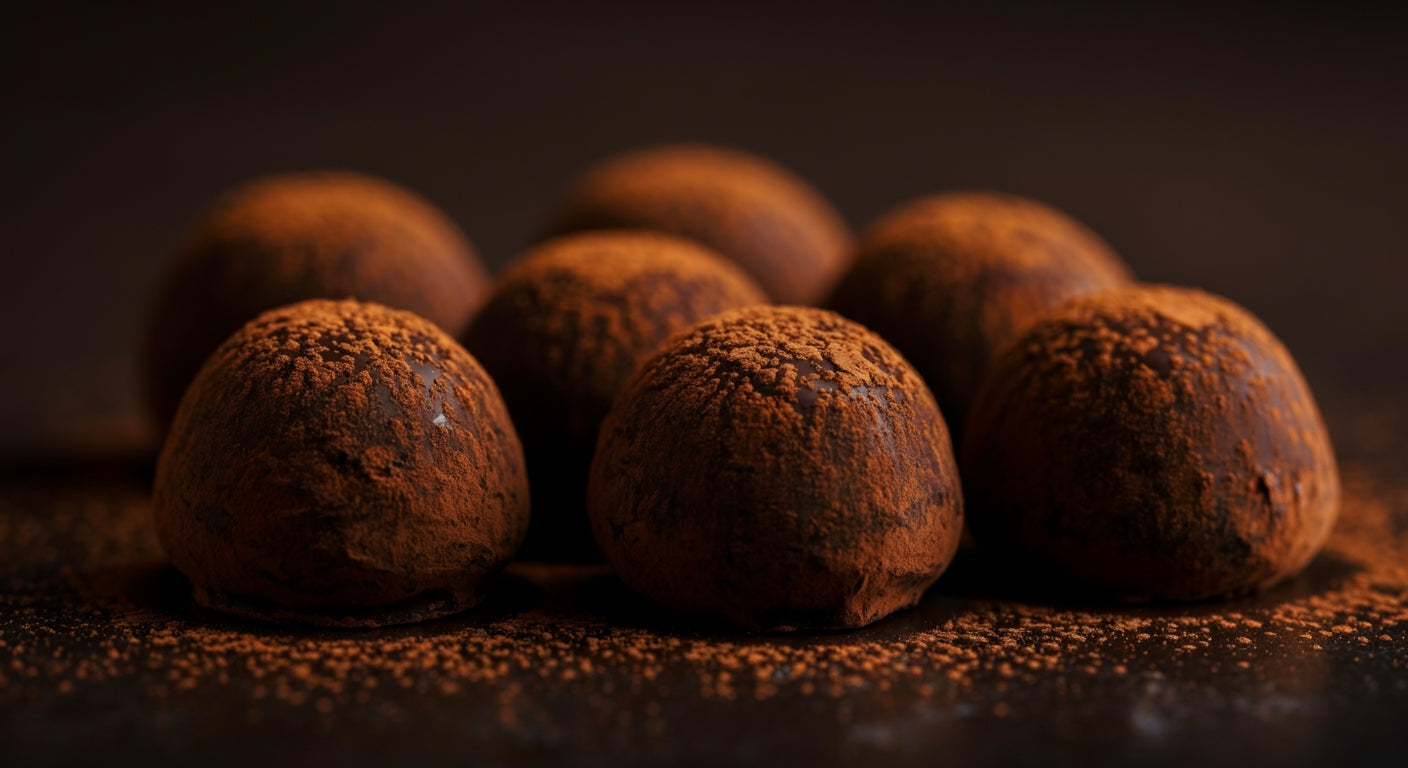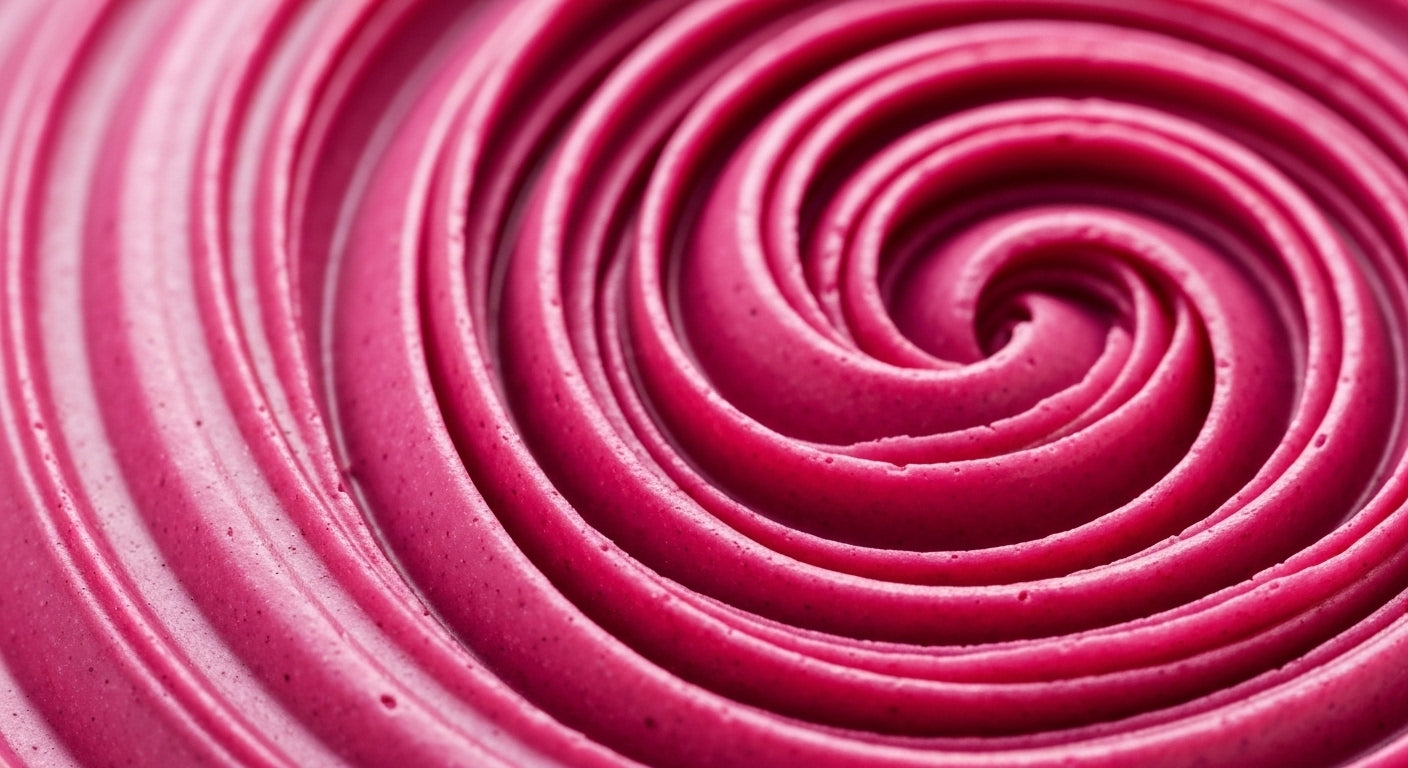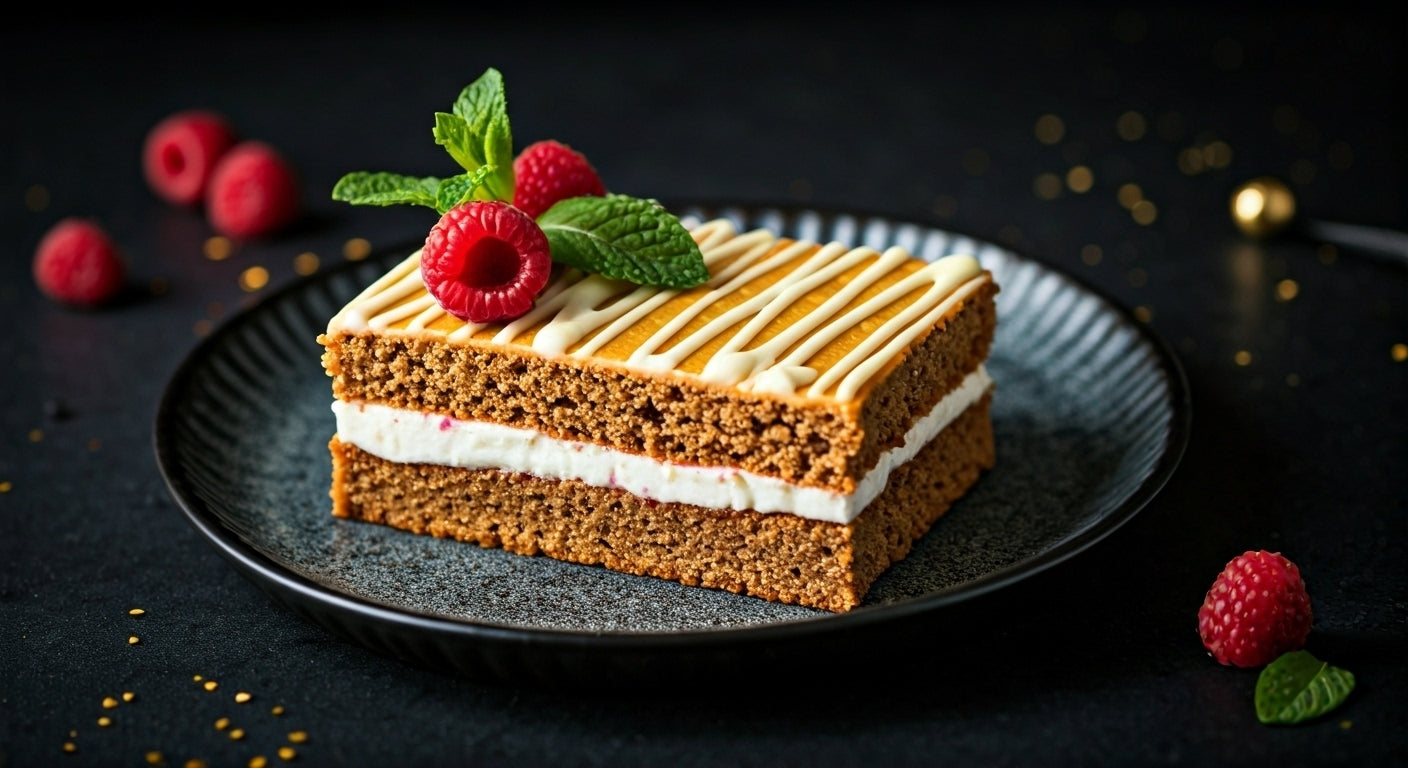
Swiss Chocolate: Understanding the Legacy Behind the World's Smoothest Chocolate
When chocolate lovers think of premium quality and silky-smooth texture, Swiss chocolate immediately comes to mind. But what exactly makes Swiss chocolate special? From the invention of milk chocolate to pioneering the conching process that revolutionized texture, Switzerland's contributions to chocolate-making have shaped global standards for over 150 years. Whether you're a chocolate connoisseur seeking to understand Swiss chocolate's legendary reputation or looking for modern artisan alternatives that honor these traditions, this comprehensive guide explores everything you need to know about Swiss chocolate—its fascinating history, groundbreaking innovations, and what to look for in premium chocolate today.
Understanding Swiss chocolate's legacy helps chocolate lovers appreciate the craftsmanship, techniques, and standards that define exceptional chocolate worldwide.
Quick Answer for Voice Search: Swiss chocolate is renowned for its exceptionally smooth texture, high milk content, and refined sweetness. Switzerland pioneered milk chocolate in 1875, invented the conching process in 1879 creating ultra-smooth chocolate, and established quality standards including high cocoa butter content and extended conching times that set global benchmarks for premium chocolate production.
The History and Innovation of Swiss Chocolate
How Switzerland Became a Chocolate Powerhouse
Switzerland's chocolate story began later than Belgium's or France's, but Swiss innovators' technical contributions transformed chocolate from a gritty, somewhat bitter substance into the smooth, creamy confection we know today. While chocolate originated in ancient Mesoamerica thousands of years ago, Switzerland's chocolate legacy began in earnest during the 19th century Industrial Revolution.
Understanding where chocolate comes from provides context for Switzerland's role in chocolate's evolution—while cacao grows only in tropical regions far from Switzerland's Alpine landscapes, Swiss technical expertise and precision manufacturing turned Switzerland into a chocolate innovation hub.
Key Innovations That Define Swiss Chocolate
Several revolutionary developments established Switzerland's chocolate reputation:
1819 - François-Louis Cailler: Established Switzerland's first mechanized chocolate factory in Vevey, bringing industrial efficiency to chocolate production. Before Cailler, chocolate-making remained largely a manual, small-scale craft.
1875 - Daniel Peter and Henri Nestlé: Created the world's first milk chocolate by combining cocoa with Henri Nestlé's condensed milk powder. This breakthrough solved the technical challenge of mixing chocolate's oily cocoa butter with watery milk without separation, creating an entirely new chocolate category. Peter spent eight years perfecting the formula before achieving success.
1879 - Rodolphe Lindt: Invented the conching process, perhaps Switzerland's most significant contribution to chocolate-making. Lindt's conche machine continuously mixed, ground, and aerated chocolate for hours or even days, creating unprecedented smoothness by reducing particle size and developing complex flavors through controlled oxidation.
1899 - Jean Tobler: Founded Toblerone, combining chocolate with honey, almond nougat, and distinctive triangular shape inspired by Switzerland's Matterhorn mountain. This innovation demonstrated how chocolate could incorporate complex inclusions while maintaining quality.
Early 1900s: Swiss chocolatiers perfected techniques for creating premium couverture chocolate with high cocoa butter content, establishing professional standards still used by chocolatiers worldwide.
These innovations didn't just improve Swiss chocolate—they established global standards that chocolate makers everywhere strive to meet.

What Makes Swiss Chocolate Special?
The Conching Process: Switzerland's Greatest Contribution
Conching remains Switzerland's most transformative contribution to chocolate-making. This process—named after the shell-shaped (conch-like) containers originally used—involves prolonged mixing of chocolate at controlled temperatures. The benefits include:
Particle Size Reduction: Extended mixing grinds chocolate particles to extremely fine sizes (often below 20 microns), eliminating grittiness for silky-smooth mouthfeel.
Moisture Removal: Conching evaporates volatile acids and unwanted moisture, reducing bitterness and astringency.
Flavor Development: Controlled oxidation during conching develops complex, mellow flavors while reducing harsh notes.
Improved Flow: The mechanical action distributes cocoa butter evenly throughout the chocolate, improving workability.
Texture Refinement: Continuous mixing coats every particle with cocoa butter, creating that characteristic melt-in-your-mouth quality.
Traditional Swiss chocolate undergoes conching for 48-72 hours, while some premium varieties conch for up to a week. Mass-market chocolates typically conch for only 4-6 hours, explaining significant texture and flavor differences. The conching process shares similarities with techniques discussed in our couverture chocolate guide.
High Milk Content and Creamy Sweetness
Swiss milk chocolate typically contains 20-25% milk solids compared to 12-15% in many other milk chocolates. This higher dairy content creates:
Creamier Texture: More milk fat contributes to smooth, velvety mouthfeel.
Milder Flavor: Milk proteins and lactose moderate chocolate's natural bitterness, creating sweeter, more approachable profiles.
Lighter Color: Higher milk content creates characteristic light brown color associated with Swiss milk chocolate.
Lower Cocoa Content: Swiss milk chocolate typically contains 25-35% cocoa content, significantly less than dark chocolate but creating the signature sweet, creamy taste.
For those seeking creamy chocolate experiences without dairy, modern innovations create similar textures using plant-based ingredients, as demonstrated in our guide on how to make great chocolate milk using alternative ingredients.
Superior Cocoa Butter Content
Swiss chocolate regulations require higher cocoa butter percentages than many other countries:
Minimum Standards: Swiss chocolate typically contains at least 26-28% cocoa butter, compared to minimum requirements of 20% in some regions.
Pure Cocoa Butter: Swiss chocolate uses only pure cocoa butter, never vegetable fat substitutes, ensuring authentic flavor and proper melting characteristics.
Smooth Melting: Higher cocoa butter content creates chocolate that melts cleanly at body temperature without waxy residue.
Our Organic Cacao Butter showcases the importance of quality cocoa butter in premium chocolate-making, offering the pure Criollo variety used in exceptional chocolates.
Swiss Chocolate vs. Other Chocolate Traditions
How Swiss Chocolate Compares to Belgian Chocolate
Both Switzerland and Belgium claim chocolate excellence, but their approaches differ significantly:
Swiss Chocolate Characteristics:
- Ultra-smooth texture from extended conching
- Higher milk content creating sweeter, creamier profiles
- Technical precision and consistency
- Focus on milk chocolate innovation
- Emphasis on texture over flavor complexity
Belgian Chocolate Characteristics:
- Shell-and-fill praline format
- Higher cocoa butter content for coating applications
- Emphasis on filled chocolates and ganache
- Focus on flavor innovation and combinations
- Artisan hand-crafting tradition
Read our comprehensive guide on Belgian chocolate to understand these European traditions in depth.
Swiss Chocolate vs. American Craft Chocolate
Modern American craft chocolate represents a different philosophy:
Swiss Approach: Consistency, refinement, accessible sweetness, technological precision, mainstream appeal
American Craft Approach: Transparency, single-origin expression, direct trade relationships, bold experimentation, artisan small-batch production
Both approaches have merit—Swiss chocolate emphasizes refined consistency while American craft chocolate celebrates unique bean characteristics and transparent sourcing.
What Makes Swiss Chocolate Stand Out Globally
Several characteristics distinguish Swiss chocolate in international markets:
Smoothness: The extended conching process creates unmatched textural refinement that sets Swiss chocolate apart.
Consistency: Swiss precision manufacturing ensures batch-to-batch uniformity, building consumer trust.
Innovation Legacy: Switzerland's pioneering spirit established techniques now considered standard worldwide.
Quality Reputation: "Swiss Made" signals premium quality in chocolate, similar to how "Champagne" signals quality in sparkling wine.
Alpine Imagery: Switzerland's mountain landscapes, pure water, and fresh milk create powerful marketing associations with purity and quality.

Famous Swiss Chocolate Brands and Their Contributions
Lindt & Sprüngli: Masters of Conching
Founded by Rodolphe Lindt in 1879, Lindt remains synonymous with smooth chocolate thanks to the conching process invention. Key contributions include:
The Conching Revolution: Lindt's original conche transformed chocolate texture permanently.
Lindor Truffles: Pioneered the smooth, melting truffle center that became globally popular, similar to the artisan approach seen in our chocolate truffles collection.
Excellence Line: Helped popularize high-percentage dark chocolate for mainstream consumers.
Global Expansion: Brought Swiss chocolate techniques to international markets.
Nestlé: Milk Chocolate Pioneers
While now a global food conglomerate, Nestlé's Swiss roots trace directly to milk chocolate innovation:
1875 Innovation: Henri Nestlé's condensed milk powder enabled Daniel Peter's milk chocolate breakthrough.
Industrial Scale: Transformed chocolate from luxury good to accessible product through mass production.
Technical Standards: Established manufacturing protocols still used throughout the industry.
Toblerone: Swiss Identity in Chocolate Form
Created by Jean Tobler in 1908, Toblerone exemplifies Swiss chocolate innovation:
Distinctive Shape: Triangular form inspired by the Matterhorn became instantly recognizable worldwide.
Nougat Innovation: Successfully incorporated honey-almond nougat into smooth chocolate.
Brand Identity: Created strong association between Swiss landscapes and chocolate quality.
Other Notable Swiss Chocolatiers
Cailler: Switzerland's oldest chocolate brand, now owned by Nestlé, established mechanized production standards.
Suchard: Pioneered mass-market Swiss chocolate in the 19th century.
Frey: Switzerland's leading supermarket chocolate brand, maintaining Swiss quality at accessible prices.
Läderach: Modern Swiss chocolatier emphasizing fresh chocolate and artisan craftsmanship.
Swiss Chocolate Production Standards
Legal Requirements and Regulations
Switzerland maintains strict standards for chocolate labeled "Swiss":
Minimum Cocoa Content:
- Dark chocolate: 35% minimum cocoa content
- Milk chocolate: 25% minimum cocoa content
- White chocolate: 20% minimum cocoa butter
Cocoa Butter Purity: Must contain only pure cocoa butter with no vegetable fat substitutes.
Production Location: All manufacturing stages must occur in Switzerland to carry "Swiss Made" designation.
Quality Ingredients: Requirements for milk freshness, sugar purity, and ingredient sourcing.
Traditional Swiss Chocolate-Making Process
Authentic Swiss chocolate production follows specific protocols:
Bean Selection: Premium beans from specific origins known for mild, sweet characteristics rather than intense or bitter profiles.
Roasting: Moderate roasting temperatures preserve sweetness while developing chocolate flavor without excessive bitterness.
Grinding: Multiple grinding stages reduce particle size progressively, creating fine texture before conching.
Conching: Extended mixing periods (48-72+ hours) at controlled temperatures develop smooth texture and refined flavor.
Tempering: Precise temperature control creates stable crystal structure for glossy appearance and satisfying snap.
Molding: Careful molding and cooling ensures uniform appearance and proper texture development.
This attention to detail at every stage distinguishes Swiss chocolate from mass-market alternatives. Understanding how long chocolate lasts helps consumers appreciate proper storage after purchase.
The Modern Swiss Chocolate Industry
Economic Impact and Export
Switzerland's chocolate industry remains economically significant:
Production Volume: Switzerland produces approximately 200,000 tons of chocolate annually.
Export Leader: Over 60% of Swiss chocolate production is exported to 150+ countries.
Per Capita Consumption: Swiss consumers eat approximately 11 kg (24 lbs) of chocolate per person annually—among the highest globally.
Employment: The chocolate industry employs thousands directly and many more in related supply chains.
Tourism: Chocolate museums, factory tours, and chocolate-themed experiences attract tourists, reinforcing Switzerland's chocolate identity.
Contemporary Challenges Facing Swiss Chocolate
Modern Swiss chocolate makers face several challenges:
Rising Costs: Labor and production costs in Switzerland exceed most chocolate-producing nations, making Swiss chocolate expensive.
Sustainability Pressure: Increasing consumer demand for ethical sourcing challenges traditional supply chains.
Cocoa Supply: Climate change affects cocoa-growing regions, creating supply uncertainty and price volatility.
Market Competition: Craft chocolate makers worldwide now produce exceptional chocolate, reducing Switzerland's competitive advantage.
Dietary Trends: Growing demand for dairy-free, sugar-free, and allergen-free chocolate challenges traditional Swiss recipes based on milk chocolate.
Health Consciousness: Consumer awareness of sugar content and processed ingredients affects milk chocolate consumption.

Finding Quality Chocolate: What to Look For
Reading Chocolate Labels
Understanding chocolate labels helps identify quality regardless of origin:
Ingredient Order: Ingredients are listed by weight. Quality chocolate lists cocoa/cacao first, followed by cocoa butter and sugar.
Cocoa Butter: Look for "cocoa butter" specifically, not "vegetable fats" or "vegetable oils" which indicate lower quality.
Milk Designation: For milk chocolate, look for "whole milk powder" or "milk solids" rather than "milk derivatives."
Simplicity: Shorter ingredient lists generally indicate better quality. Premium chocolate needs only cocoa, cocoa butter, sugar, possibly milk, and vanilla.
Certifications: Organic, fair trade, or direct trade certifications often (though not always) correlate with quality.
Explore different types of chocolate to understand how ingredient composition affects chocolate classification.
Evaluating Chocolate Quality Like a Professional
Professional chocolate evaluation considers multiple factors:
Visual Assessment:
- Glossy, uniform surface without streaks or spots
- Consistent color throughout
- Clean edges and proper molding
- No bloom (white film) indicating improper storage
Aroma:
- Rich, pleasant chocolate scent
- Complex notes (fruity, nutty, floral depending on origin)
- No burnt, chemical, or musty odors
Snap:
- Clean, sharp break when snapped
- Smooth break surface (not crumbly or waxy)
- Proper snap indicates correct tempering
Melt:
- Melts smoothly at body temperature
- No waxy or grainy residue
- Even melting without separation
Flavor:
- Balanced sweetness and chocolate flavor
- Complex taste development from initial to finish
- Pleasant aftertaste without bitterness or artificial notes
Mouthfeel:
- Smooth, creamy texture
- Proper viscosity and coating
- Clean finish without stickiness
These evaluation criteria apply to any premium chocolate, whether Swiss, Belgian, or artisan craft chocolate.
Swiss-Style Smooth Chocolate: Modern Alternatives
Achieving Swiss-Quality Texture Without Traditional Methods
Modern chocolate-making can achieve Swiss-style smoothness using alternative approaches:
Extended Conching: Many craft chocolatiers now invest in conching equipment, applying Swiss techniques to single-origin beans.
Premium Ingredients: Starting with high-quality organic cacao butter ensures proper texture foundation.
Proper Grinding: Stone grinding or refining to fine particle sizes creates smoothness without necessarily requiring days of conching.
Temperature Control: Precise temperature management during processing develops flavors and texture efficiently.
Quality Testing: Modern chocolate makers use particle size analyzers and rheometers to ensure texture meets premium standards.
Plant-Based Alternatives to Swiss Milk Chocolate
Traditional Swiss milk chocolate relies heavily on dairy, but modern innovations create similarly creamy textures using:
Coconut Milk: Our Coconut Milk Powder demonstrates how coconut creates rich, creamy chocolate without dairy. The natural fats in coconut milk replicate dairy's mouthfeel effectively.
Nut Butters: Cashew, almond, or hazelnut butters add creaminess and body, as seen in our Berkeley Bar featuring cashew butter caramel.
Oat Milk: Creates neutral-flavored creaminess that lets chocolate character shine through.
Refined Processing: Even without dairy, extended conching and proper technique create smooth, luxurious textures.
Our collection of vegan chocolate demonstrates that plant-based chocolate can achieve the smoothness and quality traditionally associated with Swiss chocolate while supporting ethical and sustainable practices.
Sugar-Free Swiss-Style Chocolate
Swiss chocolate's sweetness presents challenges for sugar-conscious consumers, but alternatives exist:
Natural Sweeteners: Using allulose, monk fruit, or stevia creates sweetness without glycemic impact, as demonstrated in our Sugar Free Chocolate collection.
Lower Sugar Content: High-quality dark chocolate naturally contains less sugar while still offering smooth texture through proper conching.
Balanced Formulations: Combining small amounts of natural sweeteners with higher cocoa percentages creates satisfying flavor without excessive sugar.
Swiss Chocolate in Beverages: Hot Chocolate Traditions
Swiss Hot Chocolate: Rich and Decadent
Swiss hot chocolate differs significantly from American-style hot cocoa:
Preparation Method: Made from melted chocolate rather than cocoa powder, creating luxurious richness. Learn more in our guide comparing hot chocolate with cocoa.
Consistency: Thick, almost pudding-like texture compared to thin hot cocoa.
Temperature: Served warm rather than scalding hot to preserve chocolate's delicate flavors.
Milk Choice: Traditionally made with whole milk or cream for maximum richness.
Minimal Sweetness: Relies on chocolate's sweetness rather than adding sugar.
Making Swiss-Style Hot Chocolate at Home
Create luxurious hot chocolate using quality ingredients:
Ingredients:
- 100g high-quality chocolate (milk or dark), finely chopped
- 250ml whole milk or plant-based alternative
- Pinch of salt
- Optional: vanilla extract, cinnamon
Method:
- Heat milk to just below boiling (around 180°F/82°C)
- Remove from heat and add chopped chocolate
- Let sit for 2 minutes, then whisk until completely smooth
- Serve immediately in pre-warmed cups
For a plant-based version, our Extra Dark Drinking Chocolate creates rich, smooth hot chocolate that rivals traditional Swiss versions.
Our Sugar-Free Drinking Chocolate offers Swiss-inspired smoothness without added sweeteners, perfect for those monitoring sugar intake.
Frequently Asked Questions About Swiss Chocolate
Is Swiss chocolate actually made in Switzerland or just Swiss-style?
Authentic Swiss chocolate must be entirely manufactured in Switzerland according to Swiss law to carry the "Swiss Made" or "Made in Switzerland" designation. This includes all stages from cocoa processing through final packaging. However, many companies produce "Swiss-style" chocolate outside Switzerland using Swiss techniques like extended conching and high milk content. These products may taste similar but cannot legally be called Swiss chocolate. When purchasing, look for clear "Made in Switzerland" labeling to ensure authenticity. Major Swiss brands like Lindt and Toblerone have some production facilities outside Switzerland, so individual products may or may not qualify as authentically Swiss depending on where they're manufactured.
Why is Swiss chocolate so smooth compared to other chocolate?
Swiss chocolate's legendary smoothness comes primarily from the conching process invented by Rodolphe Lindt in 1879. Traditional Swiss chocolate undergoes conching for 48-72 hours or more, during which the chocolate is continuously mixed, aerated, and heated. This extended process grinds particles to extremely fine sizes (often below 20 microns), removes volatile acids and moisture, distributes cocoa butter evenly, and develops mellow, complex flavors. Additionally, Swiss chocolate typically contains higher cocoa butter content (26-28% minimum versus 20% elsewhere), creating better flow and mouthfeel. The combination of ultra-fine particles and high cocoa butter content produces that characteristic melt-in-your-mouth silkiness that Swiss chocolate is famous for.
What's the difference between Swiss chocolate and Belgian chocolate?
While both are premium European chocolate traditions, they differ in several ways. Swiss chocolate emphasizes ultra-smooth texture through extended conching, higher milk content (20-25% milk solids) creating sweeter, creamier profiles, milk chocolate innovation and refinement, and consistency through precision manufacturing. Belgian chocolate focuses on filled chocolates (pralines) with ganache centers, higher cocoa butter content for coating applications, artisan handcrafting traditions, flavor innovation and unique combinations, and shell-and-fill architecture invented in Belgium. Read our comprehensive guide on Belgian chocolate for detailed comparisons. Both traditions produce exceptional chocolate—Swiss excels at texture and milk chocolate, while Belgian excels at filled chocolates and variety.
Does Swiss chocolate contain more caffeine than other chocolate types?
No, Swiss chocolate actually contains less caffeine than dark chocolate because Swiss milk chocolate typically has lower cocoa content (25-35%) compared to dark chocolate (50-90%). Caffeine content correlates directly with cocoa solid content—more cocoa solids means more caffeine. A 40g (1.4 oz) Swiss milk chocolate bar contains approximately 10-15mg caffeine, while the same amount of 70% dark chocolate contains 25-40mg caffeine. The cocoa butter in Swiss chocolate contains negligible caffeine since caffeine resides primarily in cocoa solids, not cocoa fat. However, Swiss chocolate's smooth texture and balanced sweetness might make it easier to consume larger quantities, potentially resulting in higher total caffeine intake despite lower concentration per gram.
Can you find Swiss-quality chocolate that's vegan or dairy-free?
Yes! While traditional Swiss chocolate relies heavily on dairy milk, modern chocolate-making techniques can achieve Swiss-quality smoothness using plant-based ingredients. The key characteristics of Swiss chocolate—ultra-smooth texture, high-quality cocoa butter, refined sweetness, and extended conching—don't inherently require animal products. Our vegan chocolate collection demonstrates how plant-based ingredients like coconut milk, nut butters, and proper processing create similarly smooth, luxurious chocolate. The extended conching process that makes Swiss chocolate smooth works just as effectively with plant-based formulations. Quality organic cacao butter forms the foundation, while coconut or nut milks provide creaminess, creating chocolate that rivals traditional Swiss smoothness while supporting ethical, sustainable practices.
Featured Snippet Summary
What makes Swiss chocolate special? Swiss chocolate is distinguished by its ultra-smooth texture from extended conching (48-72+ hours of mixing), high milk content (20-25% milk solids), superior cocoa butter content (26-28% minimum), and pioneering innovations including milk chocolate invention in 1875 and the conching process in 1879 that set global quality standards.
Experience Exceptional Smooth Chocolate Today
Swiss chocolate's legendary status stems from genuine technical innovations and unwavering commitment to quality that transformed chocolate-making permanently. While Switzerland pioneered techniques that defined premium chocolate standards—particularly the conching process and milk chocolate development—these methods now inspire chocolate makers worldwide who apply Swiss precision to diverse approaches emphasizing sustainability, transparency, and innovation.
Today's conscious chocolate lovers need not choose between Swiss-quality smoothness and ethical practices. Modern artisan chocolate makers create exceptional confections that honor Swiss technical excellence while advancing beyond traditional limitations through organic certification, plant-based formulations, transparent sourcing, and climate-neutral production. The future of chocolate combines time-honored craftsmanship with contemporary values, proving that luxury and responsibility can coexist deliciously.
Ready to experience chocolate that rivals Swiss smoothness while supporting sustainable practices? Explore our collection of organic vegan chocolate crafted with the same attention to texture, quality, and refinement that made Swiss chocolate legendary. Our 81% dark chocolate features the smooth, glossy finish traditionally associated with Swiss craftsmanship, achieved through careful processing and premium organic cacao butter.
From our signature Berkeley Bar featuring multiple textures harmonized through expert processing, to our smooth drinking chocolate that creates Swiss-style hot chocolate experiences, every product demonstrates that exceptional chocolate doesn't require compromise.
Discover why thousands of chocolate lovers choose Coracao Confections when they want Swiss-inspired quality with modern values. Shop our complete collection today and taste how artisan craftsmanship, ethical sourcing, and technical excellence create chocolate that honors tradition while building a better future—one smooth, delicious bite at a time.

Claire Bennett
I'm Claire, a chocolate lover and artisan based in a small town where I run a tiny home kitchen dedicated to exploring everything chocolate. From single-origin dark bars to creamy ganache and handmade truffles, I find joy in working with all types of chocolate. I believe chocolate has a story, and I love bringing that story to life through humble, heartfelt creations.



Leave a comment
This site is protected by hCaptcha and the hCaptcha Privacy Policy and Terms of Service apply.